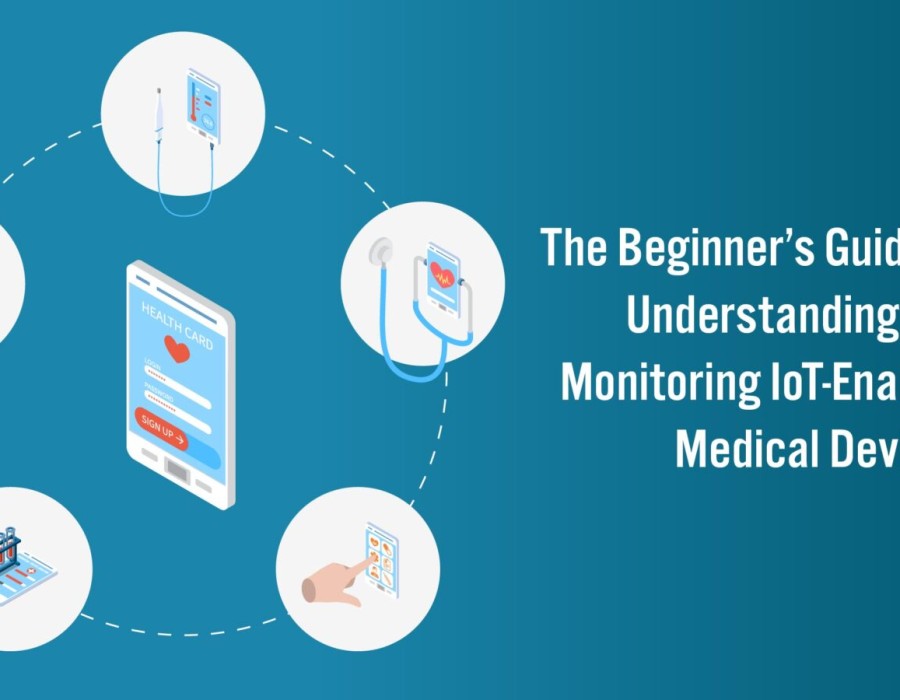The Internet of Medical Things (IoMT), encapsulating the interwoven network of healthcare devices, is rapidly gaining traction in the IoT market, poised to achieve an estimated value of $176 billion by 2026.
A profound understanding of the diverse applications of IoMT devices is paramount for efficient oversight, management, and security within healthcare. Beyond conventional practices such as monitoring heart rate and body temperature through remote patient monitoring, a myriad of other IoT applications in healthcare, particularly in the domain of IoT-enabled medical devices, is apparent.
Embark on an exhaustive exploration with us.
Decoding IoT-Enabled Medical Devices
IoT-based medical devices are transforming healthcare delivery and improving patient outcomes through cutting-edge technologies. Notable examples include:
1. Remote Patient Monitoring (RPM) Systems: Empowering proactive healthcare management by remotely tracking vital signs and overall health.
2. Smart Wearable Devices: Gadgets like smartwatches and fitness trackers provide real-time health data, fostering proactive health management and wellness.
3. Telemedicine Devices and Platforms: Leveraging IoT for virtual consultations and remote diagnosis, especially beneficial in remote areas.
4. Smart Medication Dispensing Systems: Assisting patients in adhering to medication schedules and enhancing medication management.
5. IoT-enabled Medical Imaging Devices: Integrating IoT for real-time data transmission and improved diagnostic accuracy.
6. IoT-enabled Surgical and Monitoring Equipment: Enhancing surgical precision and patient safety through real-time data capture.
7. IoT-enabled Health Information Systems: Interconnected systems facilitating seamless data exchange and secure access to patient health records, thereby optimizing overall healthcare efficiency.
These IoT-based medical devices are reshaping healthcare delivery and streamlining the efficiency of healthcare systems.
The 5 Crucial Impacts of IoT-Enabled Medical Devices in Healthcare
Explore the top five ways IoT-enabled medical devices are revolutionizing the healthcare industry:
1. Heart-rate Monitoring: Modern IoT devices allow continuous monitoring without wires, granting patients freedom of movement, despite challenges in ensuring ultra-accurate results.
2. Hand Hygiene Monitoring: IoT devices play a pivotal role in reminding individuals to sanitize their hands, significantly reducing infection rates.
3. Depression and Mood Monitoring: Leveraging various data points for continuous collection of mental state data, with improvements needed for accurately predicting symptoms.
4. Parkinson’s Disease Monitoring: Continuous monitoring of symptoms allows patients to stay at home, providing crucial data for optimizing treatment plans.
5. Glucose Monitoring: IoT-enabled devices facilitate continuous and automatic glucose level monitoring, eliminating the need for manual record-keeping and providing real-time alerts for problematic levels.
IoT-Enabled Medical Devices: Leading Contributors and Innovators
In the ever-evolving landscape of IoT-enabled medical devices, pioneering companies are taking the lead, strategically positioning themselves through tailored products, collaborative research and development initiatives, and partnerships with startups.
Microsoft, leveraging its Azure cloud platform, facilitates the seamless delivery of diverse healthcare services. Similarly, Apple transforms its consumer products into versatile health hubs, continuously enhancing features like FDA-approved electrocardiograms and menstrual health tracking in the Apple Watch.
In Conclusion
IoT-enabled medical devices emerge as a transformative force in healthcare, presenting innovative solutions for remote patient monitoring, personalized care, and real-time data-driven decision-making. These devices carry the potential to revolutionize healthcare delivery, improve patient outcomes, and elevate overall healthcare efficiency, marking a significant stride towards a more connected and proactive approach to healthcare.





Comments